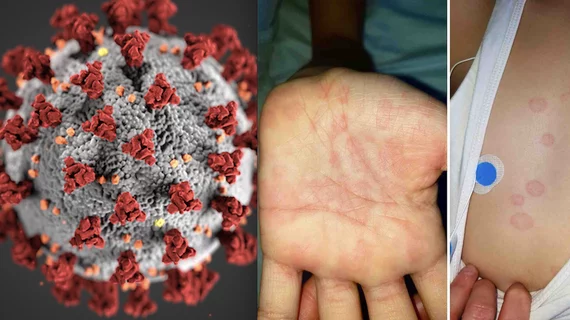A key update on how COVID-19 caused dangerous MIS-C inflammation in children
There was a lot of alarm during the COVID-19 (SARS-CoV-2) pandemic due to the sudden uptick in pediatric patients with a rare and life-threatening autoimmune condition known as multisystem inflammatory syndrome in children (MIS-C). Though it was quickly tied to a rare immune reaction in some children exposed to the COVID virus, the exact cause was not revealed until now.
MIS-C causes internal and external parts of the body to become inflamed, including the heart, lungs, kidneys, brain, skin, eyes and gastrointestinal tract. Cardiology often gets involved with these patients to evaluate myocardial involvement and because of high risks of thrombosis.
A research team led by Aaron Bodansky, Mark Anderson and Joseph DeRisi at the University of California, San Francisco, compared blood samples from nearly 200 children with MIS-C to 45 control children without MIS-C. All patients had recent COVID infections. Results of the study, which was partially funded by National Intitutes of Health (NIH), appeared in Nature in August.[1] The NIH also explained the results of the study in its Health Information newsletter this week.
Specifically, they were looking for whether the two groups had different antibodies targeting human proteins. MIS-C patients were found to have antibodies to a distinct set of proteins, SNX8, which is found at high levels within immune cells that fight viruses. They found that MIS-C patients produced a lot more antibodies that targeted a specific site on the viral nucleocapsid protein, which closely resembles the site on the SNX8 protein. Because of this molecular similarity, the same antibodies targeting the viral nucleocapsid may also be recognizing the body’s own SNX8 protein as a viral target.
Since antibodies cannot access proteins inside of cells to determine if they are friend or foe, the team then looked for T cells that reacted to SNX8. They found them in MIS-C patients, but not in controls.
These findings provide a plausible mechanism by which SARS-CoV-2 infection can, in rare cases, lead to MIS-C, the NIH said. The researchers said the process is the immune system reacting first to a specific site on the viral nucleocapsid protein. Then, because this site so closely resembles part of SNX8, the immune system begins to mistakenly target the body’s own SNX8 protein.
The explosion of COVID research during the pandemic drew many parallels with autoimmune conditions and even symptoms of long-COVID that had been observed for years in many other types of infections. The NIH article noted viral infections are also believed to trigger other autoimmune diseases, such as type 1 diabetes and multiple sclerosis. The findings from this new study could help in understanding and eventually treating these conditions as well.
It is hoped this new research approach can help break new ground in understanding similar diseases of immune dysregulation that have stumped physicians or decades.
Find more detailed information on MIS-C in the VIDEO: Cardiologists share the latest details on COVID-related MIS-C.

